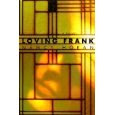
This book took me a long time to read, and for a lot of it, it just didn't grab me. The story follows two women, Alais in Carcossone in the 1200s and Alice, an English professor visiting France in 2005. Both stories move consecutively through alternating chapters and both have to do with protection of the Cathar's greatest secret: the Grail.
So everyone wants these books that tell one how to use the grail and gain its rewards. Alais devoted her life to protecting this secret, and Alice gets a lot of 800 year old baggage dumped on her head and people trying to kill her and whatnot because of these actions that happened in her past life-Alais' life. She seems to stumble blindly through almost the entire book, finally getting a clue in the last 50 pages or so.
While the story of Alais during the time of turmoil and the crusade against the Cathars is more interesting, it drags on forever with very little forward motion. And the fringe characters in both stories aren't very developed-they serve one specific purpose then drop off the page-leaving them very two dimensional and utterly forgettable. For example, the closest thing to a love interest in the modern-day part of the story is a completely hollow character who appears with a couple of aside chapters and one meeting with the main character. Then it's right back to the background. And I'm supposed to believe that this tiny bit of interaction should amount to happily ever after? Who is this person anyway?
All in all, not a bad book, but it could have used a bit more tightening to make the middle part less dry and history book-ish. I did gain a decent bit of information about the Albigensian Crusade and life in France in the early 1200's. But this was not enough to completely redeem it in my eyes.
History time: The Cathars:Catharism was a name given to a Christian religious sect with dualistic and gnostic elements that appeared in the Languedoc region of France and other parts of Europe in the 11th century and flourished in the 12th and 13th centuries. The Cathars did not believe in one all-encompassing god, but in two, both equal and comparable in status. They held that the physical world was evil and created by Rex Mundi (translated from Latin as "king of the world"), who encompassed all that was corporeal, chaotic and powerful; the second god, the one whom they worshipped, was entirely disincarnate: a being or principle of pure spirit and completely unsullied by the taint of matter. He was the god of love, order and peace.
According to some Cathars, the purpose of man's life on Earth was to transcend matter, perpetually renouncing anything connected with the principle of power and thereby attained union with the principle of love. According to others, man's purpose was to reclaim or redeem matter, spiritualising and transforming it.
This placed them at odds with the Catholic Church in regarding material creation, on behalf of which Jesus had died, as intrinsically evil and implying that God, whose word had created the world in the beginning, was a usurper. Furthermore, as the Cathars saw matter as intrinsically evil, they denied that Jesus could become incarnate and still be the son of God. Cathars vehemently repudiated the significance of the crucifixion and the cross. In fact, to the Cathars, Rome's opulent and luxurious Church seemed a palpable embodiment and manifestation on Earth of Rex Mundi's sovereignty.
The Catholic Church regarded the sect as dangerously heretical. Faced with the rapid spread of the movement across the Languedoc region, the Church first sought peaceful attempts at conversion, undertaken by Dominicans. These were not very successful, and after the murder on 15 January 1208 of the papal legate Pierre de Castelnau by a knight in the employ of Count Raymond of Toulouse (a staunch Cathar at the time who then later changed sides and fought with the Catholics), the Church called for a crusade, which was carried out by knights from northern France and Germany and was known as the Albigensian Crusade.
The papal legate had involved himself in a dispute between the rivals Count of Baux and Count Raymond of Toulouse, and it is possible that his assassination had little to do with Catharism. The anti-Cathar Albigensian Crusade, and the inquisition which followed it, entirely eradicated the Cathars. The Albigensian Crusade had the effect of greatly weakening the semi-independent southern Principalities such as Toulouse, and ultimately bringing them under direct control of the King of France. Many thousands of Languedoc citizens were massacred under the flag of religious persecution. Arnaud, the Cistercian abbot-commander, is supposed to have been asked how to tell Cathars from Catholics. His reply was "Caedite eos. Novit enim Dominus qui sunt eius."—"Kill them all, the Lord will recognize His own."
Catharism all but disappeared by the 1260s, under pressure from the Inquisition that followed the crusade.
About the author:Kate Mosse (born 20 October 1961) is an English author and broadcaster.Kate was born in West Sussex. She was educated at Chichester High School and New College, Oxford. After graduating, she spent seven years in publishing. Her bestselling books have sold millions in over 40 countries[1].
Kate married old school friend Greg Mosse, after meeting him again twenty years later on a train by chance. Mosse lives with her husband and children, Martha and Felix, in West Sussex and Carcassonne. She has written five books, and Labyrinth is her third.
Other Books to Consider:Queen Isabella by Alison Weir,
The Pillars of the Earth by Ken Follett,
The Lady and the Unicorn by Tracy Chevalier, and
Katherine by Anya Seton.








